Descend into history with this guide to the 7 creepiest, most awe-inspiring catacombs you can visit across the globe. Explore underground ossuaries, ancient tombs, and bone-lined corridors, with detailed historical background, visiting tips, ticket info, and eerie dining spots nearby.

What Are Catacombs?
Catacombs are subterranean passageways used for religious practice, burial, and commemoration of the dead. Often carved into limestone or volcanic rock, these underground labyrinths have housed bodies, relics, and mummified remains for centuries. While many originated as practical burial solutions in times of plague or overpopulation, catacombs evolved into profound spaces of spiritual and cultural significance. Today, they offer a haunting yet awe-inspiring glimpse into how different societies have engaged with mortality.
Below are seven of the most bone-chilling and culturally rich catacombs you can actually visit. Whether you’re chasing the macabre or seeking ancient reverence, these sites promise unforgettable subterranean journeys.
If you like the dark stuff, Cerca has a whole series of dark podcast stories, start with Killer Trip.
1. The Catacombs of Paris – Paris, France
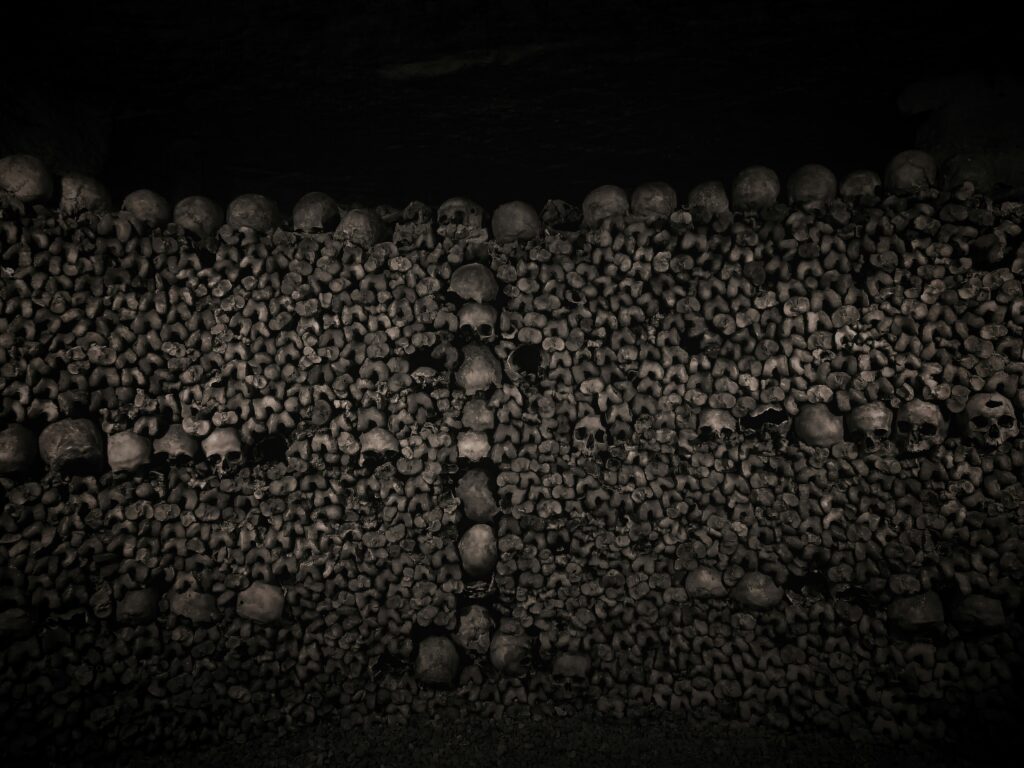
Beneath the romantic streets of Paris lies something far more chilling than croissants and cabarets: the Catacombs of Paris, a shadowy ossuary housing the remains of over six million people. Originally limestone quarries dating back to Roman times, these tunnels were repurposed in the late 18th century as a response to the city’s overflowing cemeteries. In particular, the notorious Les Innocents cemetery had become a health hazard, prompting officials to exhume thousands of corpses and transfer them underground.
From 1786 onward, bones were moved at night in solemn processions, accompanied by priests reciting prayers for the dead. Over the years, workers arranged the bones in artistic formations—walls of skulls and femurs, bone altars, even heart-shaped designs—transforming the space into a surreal, subterranean gallery of mortality. It’s not just a burial site, but a reflection of Enlightenment-era thinking about death, order, and public hygiene.
The catacombs became open to the public in the 19th century, drawing curious Parisians and later, tourists from around the world. Walking through the dimly lit tunnels, with stacked skeletons peering from every angle, you’re struck by the sobering reminder of life’s fragility. Yet there’s also an odd sense of peace here—a reverence in the quiet, the dust, the cold.
Located near Denfert-Rochereau, the catacombs are easily accessed via metro. Visits are self-guided and take about 45 minutes. Today, they remain one of the most haunting and historically rich attractions in all of Paris, a memento mori hidden just beneath the surface.
How to Visit
- Tickets: prices start at €12 (advance booking required) – also note, no bags allowed inside.
- Website: catacombes.paris.fr
- Opening Hours: Tuesday to Sunday, 9:45 AM – 8:30 PM
Tips for Your Visit
- Bring a sweater: it’s a consistent 14°C (57°F) underground.
- The walk is long and includes over 130 steps down and up.
- Photography is allowed but flash is forbidden.
Where to Eat
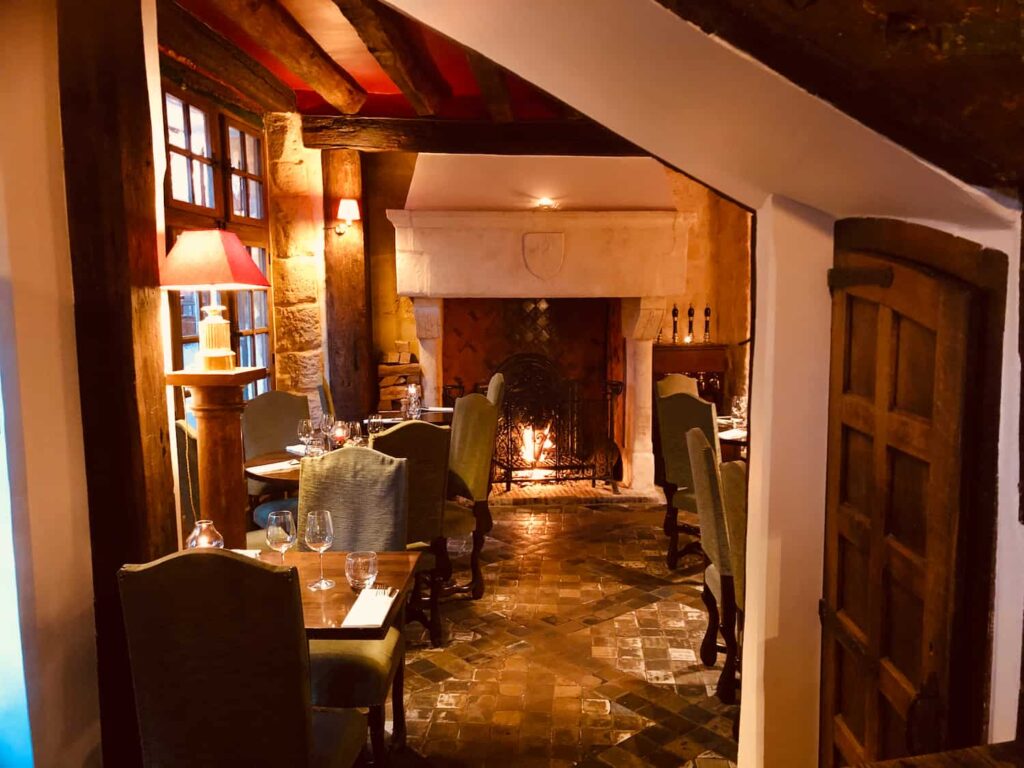
Le Coupe-Chou: Just a 20-minute walk away, this historic French restaurant is composed from 4 buildings, the oldest dating back to the 14th century, and offers candlelit meals in stone-vaulted rooms. This neighborhood of the fifth arrondissement of Paris still shows off its’ medieval heritage, but the relics go back even farther than that – while restoring the cellars the owners found the remains of a Gallo-Roman city from the 2nd century, including hot water pipes and a swimming pool. This was the time of Roman emperor Marcus Aurelius. The menu is classic french, including froix gras, duck breast, and fillet mignon.
2. Capuchin Crypt – Rome, Italy
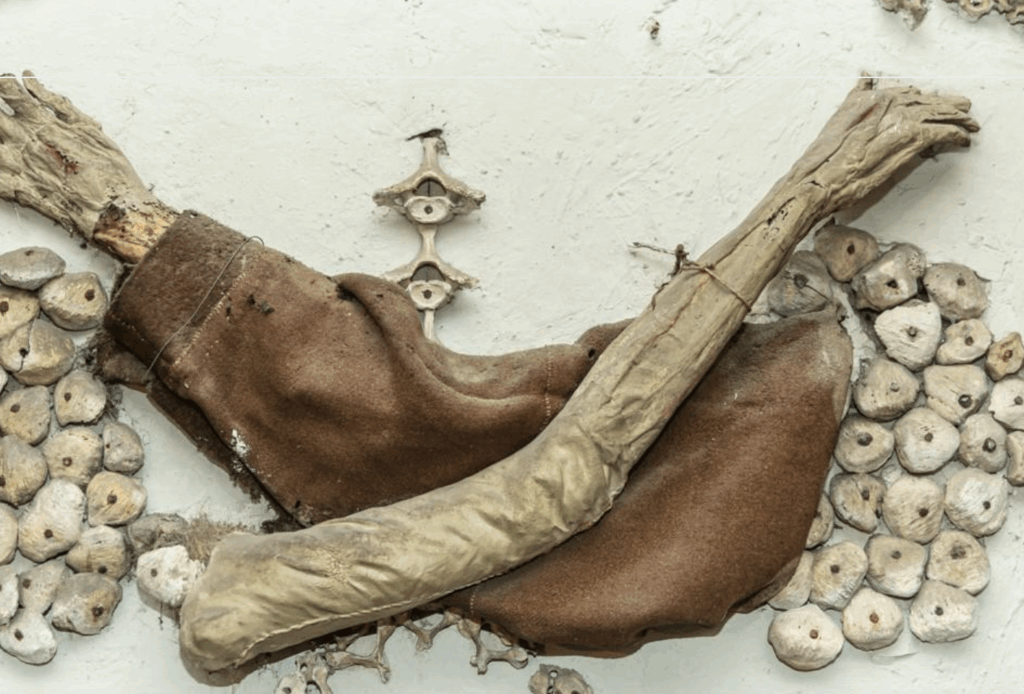
Tucked beneath the Church of Santa Maria della Concezione dei Cappuccini on Via Veneto, the Capuchin Crypt is one of Rome’s eeriest yet most thought-provoking sites. At first glance, it might seem like a small chapel. But descend the narrow staircase and you’ll enter a series of chambers decorated not with paint or gold—but with human bones. The remains of over 3,700 Capuchin friars, collected between 1500 and 1870, have been arranged into elaborate displays: chandeliers made from vertebrae, altars lined with skulls, and full skeletal figures still draped in monks’ robes.
This isn’t a horror show. The crypt was created as a spiritual reflection on the fleeting nature of life. The friars believed that confronting death daily helped prepare the soul for eternity. A plaque in one chamber famously reads: “What you are now, we once were; what we are now, you shall be.” It’s a clear call to humility and self-reflection, using the language of bones rather than sermons.
The crypt’s artistic arrangements were crafted in the 18th century by friars themselves, who saw beauty and symmetry in the afterlife’s physical leftovers. Despite the morbid medium, the space carries a certain peace—solemn, quiet, and oddly reverent.
Located near Barberini metro station and just a short walk from the Trevi Fountain, the Capuchin Crypt is easy to reach. Entry includes access to a small museum on the history of the Capuchin order. It’s a powerful detour from the grandeur of Roman ruins—smaller in scale but immense in impact.
How to Visit
- Tickets: €10
- Website: https://museoecriptacappuccini.it/
- Opening Hours: Daily, 10 AM – 7 PM
Tips for Your Visit
- Silence is expected; this is a religious site.
- No photography allowed.
- Visit early in the day to avoid crowds.
Where to Eat
Hostaria Romana: Born in the ashes of World War 2, Hostaria serves classic Roman dishes like cacio e pepe and bucatini all’amatriciana served in a cozy, dimly lit setting evocative of Rome’s long history.
3. Catacombs of Kom El Shoqafa – Alexandria, Egypt
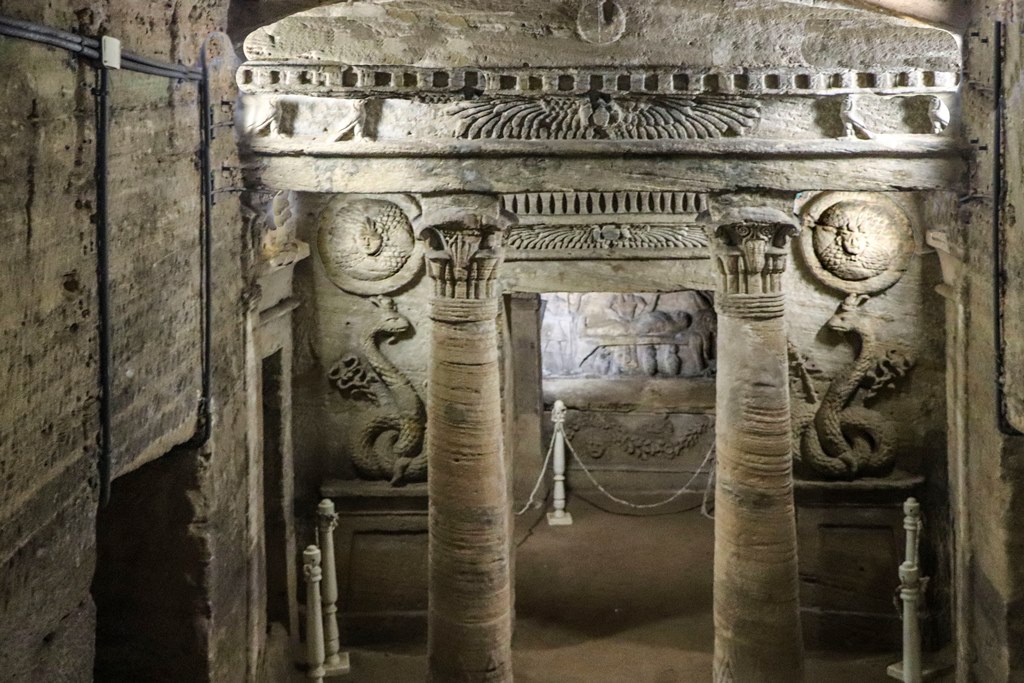
Hidden beneath the bustling streets of Alexandria, Egypt, the Catacombs of Kom El Shoqafa are among the most extraordinary archaeological wonders in the Mediterranean. Discovered by accident in 1900—when a donkey reportedly fell through a sinkhole—this 2nd-century CE necropolis is a fascinating fusion of Egyptian, Greek, and Roman cultural elements, all sculpted into the rock beneath the city.
The name Kom El Shoqafa means “Mound of Shards,” referencing the broken pottery left by mourners who brought food and drink to the tombs but didn’t want to carry the vessels back. The site descends three levels underground (though only two are currently accessible due to flooding), spiraling down a wide staircase that once accommodated coffins lowered on ropes.
Inside, visitors find a central tomb chamber flanked by sculptures that are as strange as they are beautiful: Anubis, the jackal-headed Egyptian god of the afterlife, is shown wearing Roman military garb, while carved columns and friezes mix pharaonic symbolism with Hellenistic motifs. These stylistic mashups reflect Alexandria’s role as a cultural crossroads of antiquity—where ancient Egyptian traditions coexisted with Greco-Roman influences.
Unlike the bone-stacked catacombs of Europe, Kom El Shoqafa is not filled with visible remains but is instead focused on the architecture of remembrance. The site includes a triclinium, or Roman-style banquet hall, likely used for ceremonial meals honoring the dead.
Located in Alexandria’s Karmouz district, the catacombs are open daily and require only a small entry fee. A guide is highly recommended to fully appreciate the site’s unique artistic and cultural synthesis.
How to Visit
- Tickets: EGP 80 (about $2.60 USD)
- Hours: Daily, 9 AM – 4 PM
- No official website; tickets available at the gate.
Tips for Your Visit
- Bring cash.
- Go early to avoid the heat and crowds.
- A guide is recommended to unpack the unique art and history.
Where to Eat

Hidden in an alley of Alexandria, the Ali El‑Hendy Coffeehouse opened in 1882 and remains today as a beautifully preserved example of Art Nouveau design. Its ornate décor, calm ambiance, and century‑old charm make it a rare gem in Egypt’s café culture.
During both World Wars, the coffeehouse served a surprising role: patrons sheltered inside during air raids, turning it into a makeshift community refuge . This adds a dramatic layer of history, transforming it from a casual meeting spot into a symbol of local resilience.
Despite its discreet back‑alley location, Ali El‑Hendy continues to draw visitors intrigued by its history, architecture, and atmosphere. It’s prized for its authentic feel—a timeless space where you can almost sense Alexandria’s layered past.
4. Palermo Capuchin Catacombs – Palermo, Italy

The Palermo Capuchin Catacombs are among the most chilling and unforgettable burial sites in the world. Located beneath the Capuchin Monastery on the outskirts of Palermo, Sicily, this sprawling subterranean cemetery houses the mummified remains of more than 1,200 individuals—monks, nobles, professors, doctors, children—each carefully dressed and displayed along the walls. Unlike most catacombs, which conceal bones in piles or shrines, the Capuchin Catacombs are startlingly intimate: the dead here meet your gaze with preserved expressions, dressed in their Sunday best, forever caught between life and death.
The catacombs were born out of practicality. In the late 1500s, Palermo’s Capuchin monks discovered that the crypt beneath their monastery naturally preserved corpses. Initially used only for friars, the crypt quickly became a status symbol among local elites. Families paid to have their loved ones interred and even maintained posthumous “relationships,” bringing gifts or requesting certain clothes.
Perhaps the most haunting resident is Rosalia Lombardo, a two-year-old girl who died in 1920 and was embalmed so perfectly that she appears to be merely asleep. Known as the “Sleeping Beauty,” she draws thousands of visitors each year.
The catacombs are open to the public daily, though photography is forbidden out of respect for the dead. The experience is deeply sobering—less a tourist attraction and more a raw confrontation with mortality. Located just a short drive from Palermo’s historic center, they offer an eerie but culturally significant detour from the city’s sunny piazzas and baroque churches.
How to Visit
- Tickets: Starting at €3
- Hours: Daily, 9 AM – 12:30 PM and 3 PM – 5:30 PM
- Website: palermocatacombs.com
Tips for Your Visit
- Not for the faint of heart.
- Photography is forbidden.
- Respectful attire required.
Where to Eat

Osteria dei Vespri: A refined Sicilian dining spot in a baroque palazzo, come prepared for elegant tasting menus including sea urchin, purple gnocchi, and spiced lamb.
5. St. Stephen’s Catacombs – Vienna, Austria

Beneath the iconic Gothic spires of St. Stephen’s Cathedral in Vienna lies a hidden world of decay and devotion: the St. Stephen’s Catacombs. Originally built in the 14th century, this subterranean burial site was expanded during the Black Plague and later the Turkish sieges, when above-ground cemeteries became too full to hold the city’s mounting dead. Today, it holds the remains of more than 11,000 individuals, including plague victims, clerics, and even members of the powerful Habsburg dynasty.
What sets these catacombs apart is their layered history. In one chamber, neatly stacked bones fill every corner—a medieval solution to space management. In another, open coffins display the decaying remains of cardinals and bishops. A particularly macabre twist? The hearts and entrails of Habsburg royalty were separated from their bodies and buried here, in keeping with imperial custom. It’s a haunting expression of Vienna’s complex relationship with mortality, ritual, and power.
Access is only possible via guided tour, which begins from inside the cathedral. Guides share stories in both German and English, offering context for the crypts’ eerie silence. The tour ends in the older section of the catacombs, where stacked skulls and femurs stretch into shadowy corridors.
Located in the heart of Vienna’s old town, the catacombs offer a stark contrast to the elegance above. Whether you’re a history buff or simply intrigued by the macabre, this underground world delivers a visceral, unforgettable glimpse into the past—and the inevitability of death.
How to Visit
- Tickets: €6.50 (guided tour required)
- Hours: Daily, 10 AM – 4:30 PM
- Website: stephanskirche.at
Tips for Your Visit
- Tours available in English and German.
- Not wheelchair accessible.
- Combine with a visit to the cathedral and tower.
Where to Eat

Gigerl: Classic Viennese cuisine like wiener schnitzel, smoked meat, sauerkraut, dumplings, and parsley potatoes in a cozy cellar tavern.
6. Brno Ossuary – Brno, Czech Republic
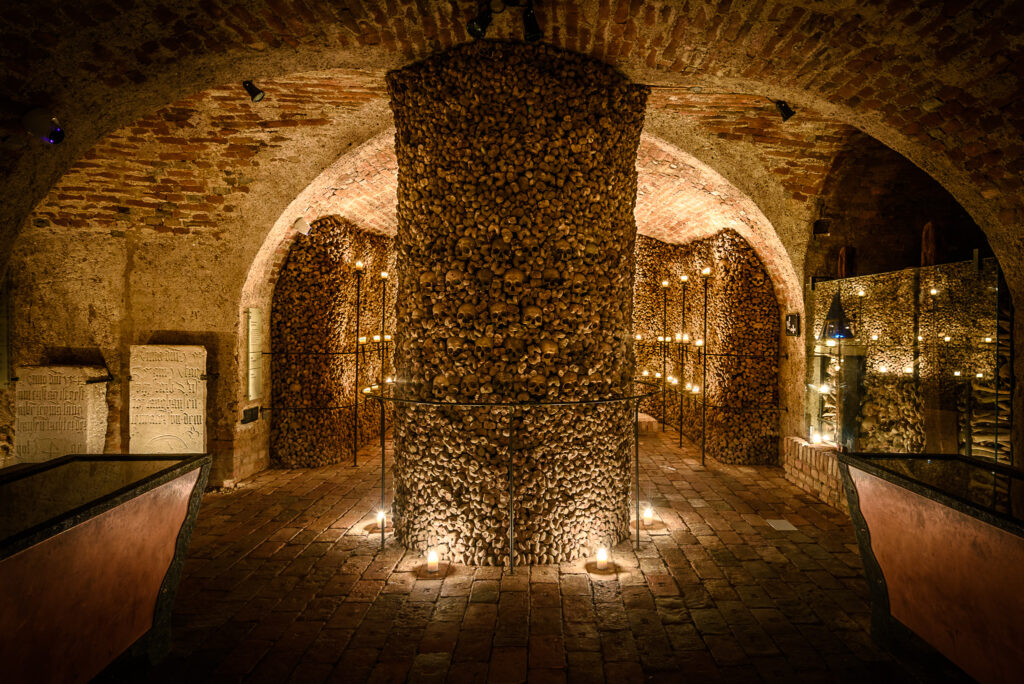
Beneath the Church of St. James in Brno, Czech Republic, lies an underground chamber that few outside Central Europe know exists: the Brno Ossuary, the second-largest ossuary in Europe after Paris. Discovered in 2001 during routine archaeological work, this catacomb-like site was revealed to contain the skeletal remains of more than 50,000 people, stacked neatly in solemn arrangements. Most of the bones belong to victims of medieval plagues, cholera outbreaks, and 17th-century wars—testaments to the city’s turbulent past.
While not as sprawling as the catacombs of Paris, the Brno Ossuary is artfully arranged, lit by soft, ambient lighting and accompanied by haunting music that adds to the atmosphere. Walls of bones are punctuated by symbolic crosses and poetic inscriptions about death and remembrance, creating a space that is less terrifying than deeply meditative. Unlike some ossuaries that focus solely on shock value, this one evokes a quiet reverence, encouraging reflection on mortality and history.
The ossuary was built in the 17th century but forgotten for centuries until its rediscovery. It reopened to the public in 2012 and now stands as a moving reminder of Brno’s resilience and spiritual depth. Information panels explain burial customs and the historical context, and tours are available in English and Czech.
Located right in the city center, it’s easy to add the Brno Ossuary to any walking tour of this charming Moravian capital. It’s a must-visit for travelers seeking history with a visceral twist—an underground gallery where death speaks softly, but clearly.
How to Visit
- Tickets: 160 CZK (~$7)
- Hours: Tuesday to Sunday, 9:30 AM – 6 PM
- Website: https://podzemibrno.cz/mista/kostnice-u-sv-jakuba/
Tips for Your Visit
- Buy tickets in advance during peak season.
- Don’t miss the nearby St. James Church, known for its Gothic architecture.
- English signage available.
Where to Eat

Kolkovna Brewery: Traditional Czech pub fare and beer in a historic setting – get the sausage board with beer pairing: three types of house-smoked sausages with sauerkraut, beer mustard, and toasted bread, or confit duck and marinated shallots.
7. Sedlec Ossuary – Kutná Hora, Czech Republic

The Sedlec Ossuary in Kutná Hora, Czech Republic—often referred to as the “Bone Church”—is one of the most visually arresting and macabre religious sites in the world. Located beneath the Cemetery Church of All Saints in the Sedlec district, this small Roman Catholic chapel holds the skeletal remains of over 40,000 people, artistically arranged into chandeliers, pyramids, garlands, and even a coat of arms.
The story begins in the 13th century, when an abbot from Sedlec returned from the Holy Land with a handful of soil from Golgotha, the hill where Jesus was crucified. He scattered the holy earth across the cemetery, making it one of the most desirable burial places in Europe. During the Black Death and Hussite Wars, thousands were interred here. By the 16th century, the cemetery was overfilled, and bones were exhumed to make space.
In 1870, a local woodcarver named František Rint was hired to organize the remains. What he created was a haunting masterpiece—a memento mori in the truest sense. His bone chandelier is especially striking, supposedly containing at least one of every bone in the human body.
Today, Sedlec Ossuary is a UNESCO World Heritage Site and an easy day trip from Prague (about an hour by train). Visitors should respect its sacred nature—though photography is allowed, silence is expected. The site reflects a medieval mindset where death was not denied but embraced, and where the line between devotion and dread was carved, quite literally, in bone.
How to Visit
- Tickets: 160 CZK (~$7)
- Hours: Daily, 9 AM – 6 PM (summer)
- Website: sedlec.info
Tips for Your Visit
- Combine with a trip to St. Barbara’s Cathedral.
- Trains run regularly from Prague (about 1 hour).
- Flash photography not allowed.
Where to Eat

Dačický: Traditional Bohemian cuisine in a medieval-style beer hall. Dishes inspired by 16th-century alchemist Bavor Rodovský of Hustiřany paired with modern creations by chef Láďa—like wild boar goulash with gingerbread dumplings, tender beef cheeks, roast duck, and a fragrant plum tart.
Final Tips for Catacomb Visits
Wear sturdy shoes: Underground passages can be uneven and damp.
Respect the silence: Many catacombs are religious or memorial sites.
Check seasonal hours: Some locations shorten hours in winter.
Bring cash: Especially in Egypt and Eastern Europe.
These seven sites let you confront mortality, marvel at artistry made from the macabre, and understand how deeply the past clings to our bones. There’s no better way to explore the shadowy side of history.
Happy haunting.